Underloading your SLE+ samples can result in better partitioning and cleaner samples. Supported liquid extraction (SLE) is a simple clean-up technique similar to liquid-liquid extraction (LLE), but on a solid supported surface.
It’s simple “load, wait and elute” protocol provides clean extracts with fewer steps than a typical solid phase extraction (SPE) method. ISOLUTE SLE+ is a great sample prep option if your analytes are hydrophobic and works best if your compound’s logP is greater than 1.
Unlike SPE plates and cartridges, which are sold by sorbent bed mass (10 mg or 30 mg for example), SLE+ cartridges are sold by aqueous capacity or how much pretreated aqueous sample can be loaded onto the cartridge or well plate. ISOLUTE SLE+ comes in a variety of sample capacities from 200 µL up to 10 mL. The entire aqueous sample is absorbed onto the SLE+ material – there should be no flow through during sample load. Once you apply something to the SLE+, you have basically “used” it, so you don’t want to condition or equilibrate the SLE+ like you might with SPE.
Your SLE+ extraction solvent must be water-immiscible, just like LLE. The more non-polar, or hydrophobic the extraction solvent, the cleaner your extracted samples will be. Hexane, heptane, MTBE or dichloromethane will give the cleanest extracts. Ethyl acetate is more polar and more water soluble. It can yield higher extraction recoveries, but samples may not be as clean. Analytes should also be neutral when using SLE+.
For blood assays, another consideration besides analyte polarity, logP and charge state is if the compounds you are trying to quantitate are protein bound. Science Direct has some good resources that discuss protein binding in biological matrices. Many drugs, metabolites and endogenous compounds are bound to plasma proteins, and the proteins must be disrupted to release the bound analytes. Acid or base can be used for protein disruption. For nonpolar, more hydrophobic analytes, treatment with methanol, isopropyl alcohol, or acetonitrile can be used. Unfortunately, water soluble organic solvent in your pretreated sample can cause breakthrough and increased matrix factors during SLE+ extraction. In addition, adding a small amount of a water miscible solvent like isopropyl alcohol to the SLE+ elution solvent can improve recovery of more polar analytes, but also cause breakthrough and result in dirtier extracted samples.
One way to get cleaner extracts from SLE+ is to underload the SLE well or cartridge by 10-25%. This is especially helpful when organic solvent is used for protein disruption, or a more polar elution solvent is used. Loading 300-350 µL onto a 400 µL SLE+ cartridge provides better partitioning and can result in cleaner extracts, especially if an alcohol is used for sample pretreatment.
When adding MeOH or acetonitrile to the elution solvent, try a very low amount (1-2%). For IPA, 5-10% is ok. Try pretreating your plasma sample 1:1 with 50:50 IPA:water for protein bound analytes, and load 300 µL of pretreated sample onto a 400 µL SLE+ cartridge. For ionic or more polar analytes, try disodium EDTA, formic acid, TCA, acetic acid, TFA, or phosphoric acid or 5% zinc sulfate. Try to add the water miscible alcohol or organic solvent during pretreatment or elution, but not both. If you must add an alcohol for both pretreatment and elution, use the smallest amount that gives the desired results, and underload the SLE+ cartridge or well plate.

